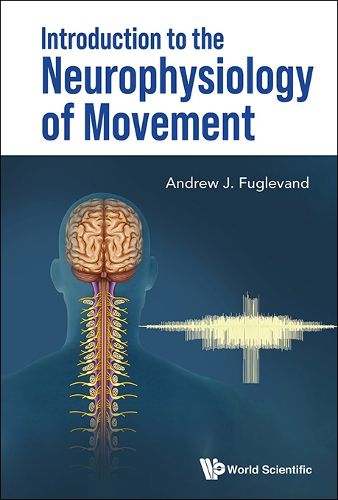Readings Newsletter
Become a Readings Member to make your shopping experience even easier.
Sign in or sign up for free!
You’re not far away from qualifying for FREE standard shipping within Australia
You’ve qualified for FREE standard shipping within Australia
The cart is loading…






This introductory textbook explores how the brain and spinal cord regulate movement. It is designed for senior undergraduate and early-stage graduate or clinical students in movement sciences, physiology, neuroscience, biomedical engineering, physical therapy, occupational therapy, rehabilitation sciences and speech sciences.The book begins by presenting the fundamentals of cellular neurophysiology in a conceptual and accessible manner. It then explores key principles of sensory processing, using the somatosensory system as both a model system and a fundamental component of movement control.The motor system is discussed in detail, starting with the periphery (focusing on the motor unit) and progressing to motor areas in the cerebral cortex, cerebellum and basal ganglia. The roles of these regions are examined within the framework of three broad categories of movement: reflexes, rhythmic behaviours and voluntary movements. The book also discusses various neurological disorders affecting movement and outlines current therapeutic approaches.
$9.00 standard shipping within Australia
FREE standard shipping within Australia for orders over $100.00
Express & International shipping calculated at checkout
This introductory textbook explores how the brain and spinal cord regulate movement. It is designed for senior undergraduate and early-stage graduate or clinical students in movement sciences, physiology, neuroscience, biomedical engineering, physical therapy, occupational therapy, rehabilitation sciences and speech sciences.The book begins by presenting the fundamentals of cellular neurophysiology in a conceptual and accessible manner. It then explores key principles of sensory processing, using the somatosensory system as both a model system and a fundamental component of movement control.The motor system is discussed in detail, starting with the periphery (focusing on the motor unit) and progressing to motor areas in the cerebral cortex, cerebellum and basal ganglia. The roles of these regions are examined within the framework of three broad categories of movement: reflexes, rhythmic behaviours and voluntary movements. The book also discusses various neurological disorders affecting movement and outlines current therapeutic approaches.